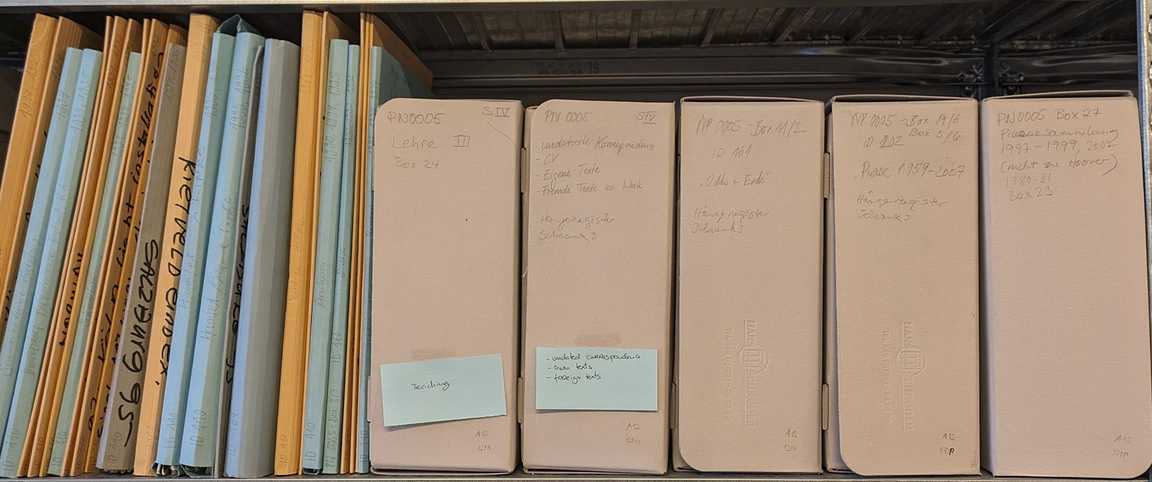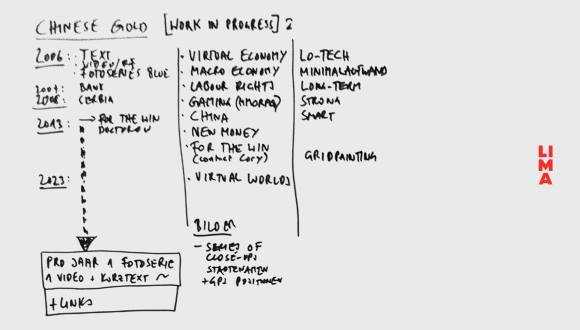
Archives and Archival Research
The archives LI-MA safeguards and researches
LI-MA is working on and is involved in various archive projects, including several examples detailed below.
Hooykaas/Stansfield Archive
Madelon Hooykaas (NL, 1942) and Elsa Stansfield (1945–2004) worked together under the name 'White Bird', and later as 'Hooykaas / Stansfield' or 'Stansfield / Hooykaas'. From the 1970s onwards, they produced many video environments, in which they combined video with photography, objects and sound, making their first site-specific installations. The combination of different media and materials enables them to introduce various levels of perception into their work. Their work has been exhibited at a number of museums of modern art around the world, including the Tate Gallery in Liverpool, Stedelijk Museum in Amsterdam, The Museum of Modern Art in New York, and Documenta. In 1998, they had a solo exhibition at the Netherlands Media Art Institute, for which the CD-ROM 'Person to Person' was produced. Stansfield/Hooykaas have realised more than 90 video artworks, installations and sculptures, of which around 40 are in the collection of LI-MA.
Together with artist Madelon Hooykaas and interns, a large part of the paper archive and the video archive of Stansfield / Hooykaas has been inventoried and a large number of works from the 1970s on have been preserved.
Nan Hoover Archive
Nan Hoover (New York 1931 – Berlin 2008) is widely recognised as one of the pioneers of Dutch media art, and as a multimedia artist she was far ahead of her time. Nan Hoover was noted internationally for her pioneering work with video, light and time until her death in Berlin in 2008. The influence on her own generation, but especially on younger generations of artists, cannot be overestimated. In 2009 the Netherlands Media Art Institute (NIMk) started to catalogue her audiovisual legacy. This archive contained over 1,000 items of varying nature, including original works on film and video, working material, performance registration and documentation, photographs and slides, production equipment and various examples of commercial video and audio (presumably used for purposes of research and inspiration). Since 2012 LI-MA has been hosting this archive for the Nan Hoover Foundation and from 2013 on also the paper archive, which was previously stored at the Kunstakademie Duesseldorf, including correspondence, clippings, photos and more.
In her memory, and to establish a scholarly legacy for her life and career, the “Nan Hoover Catalogue Raisonné, Volume 1” has been made by Dawn Leach and published by the Nan Hoover Foundation (NHF). http://oops.uni-oldenburg.de/3382/
Network Archives Design and Digital Culture (NADD)
LI-MA is a proud member of the Network Archives Design and Digital Culture (NADD), which unites a number of partners to together take care of Dutch digital culture heritage. It does so by combining the strength and knowledge of the partners: museums, heritage, educational and cultural institutions, knowledge institutes, makers, designers and government offices. In doing so it gives an additional boost to all the different archives cared for by these partners. LI-MA is a node in this net, sharing knowledge, infrastructure and participating in a variety of working groups. See Digital Care, Het geheugen van digitale kunst en cultuur by Brigitte Jansen, Sanneke Huisman en Klaas Kuitenbrouwer, Boekman #135
Archive the_Living by Debra Solomon
the_living is a performance-based net artwork by artist Debra Solomon (US/NL) between 1997 and 1998. It centres around the online life of the digi-persona ‘the_living’, with the artist as her flesh holder. The work is highly situationist, with the_living intervening into different chatrooms of an early video conferencing software CU-SeeMe without former notice. After the year-long performance, the_living project continued to evolve in the form of installations, broadcasts and in-person tours until a complete shift in the artist’s practice in 2003. Due to technological obsolescence, the website is no longer online and most of the digital files have been lost. Despite its ephemeral lifespan, the work was pioneering in staging artistic intervention into the online public space, and critically reflecting on the blurring boundaries between the physical and virtual worlds at the early Internet age.
- To read more about the research that went into archiving the_living visit the Infrastructure Case Study Project Page here
the-living - Debra Solomon. Promo video for the Network for Archives and Digital Design (NADD)
Archiving Chinese Gold by UBERMORGEN
Chinese Gold was an archive case study within the framework of the LI-MA project and public programme Cultural Matter. Within this research, several aspects of Chinese Gold had to be addressed by an archive and preservation strategy to ensure the future distribution and exhibition of the artwork:
- the conceptual nature of the work required deeper insight into the artists' intentions and process;
- the online research context, crucial to its development, constitutes an ever-growing source of information on the work and its theme;
- the exhibition history and the artists' decisions reveal a deliberate maintenance of uncertainty with regards to the work's evolution;
- and lastly, the work is very much subject to the influence of third parties, who have somehow contributed to the creation of core material of the work (found material), or influenced its becoming, through curatorial decisions or commentary.
In her case study research, Boschat Thorez exposes her experience, thoughts and approach to preserving Chinese Gold as a stranger from traditional institutional practices.







